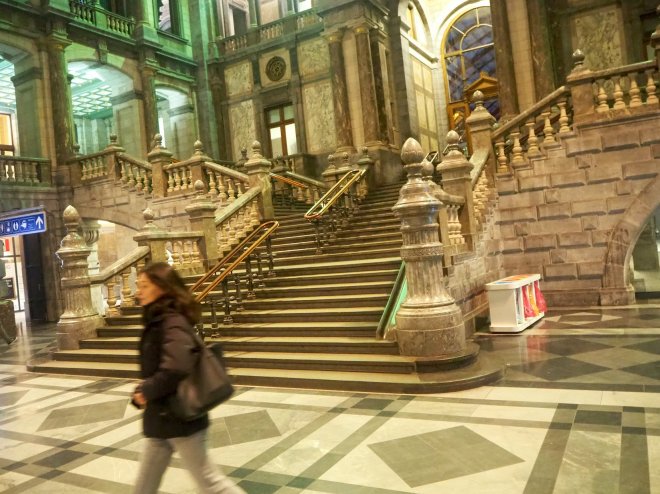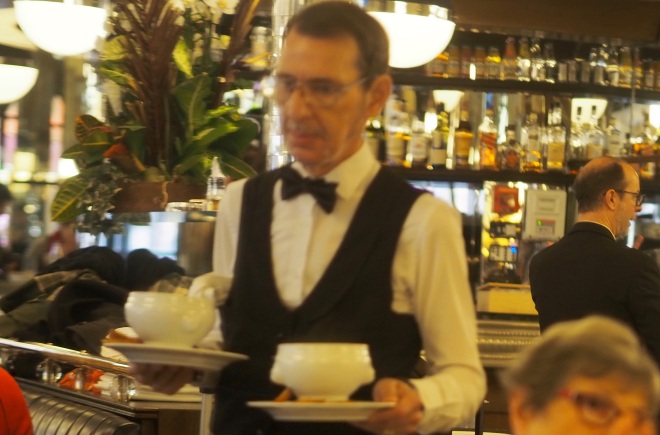On a Saturday morning in April 2008 I cycled away from my house in Ixelles, Brussels, heading southeast. That evening I reached Rochefort, in the Belgian Ardennes. It was the first of 53 days over the last ten years that I’ve spent walking (solid lines) and occasionally cycling (dotted lines) in that direction. A year ago this month I reached Vienna.

I love my job at the European Commission. I realised, though, that for work I mostly visited the capital cities of member states. The idea of this journey was to see what the rest of Europe is like.
The journey has done that, and given me other things too. In a Richard Long sort of way, I like the invisible line I have made. I think that it didn’t exist before I did the journey; it does now. The journey also gave me the chance to spend full days in the company of Old Dog – until in 2014 or 2015 (I’m not quite certain of the dates in Bavaria) I more or less dragged him into Dingolfing because he couldn’t do it any more. We missed our train by five minutes and got home half a day late.
This line, understood as a succession of Hodson-powered stages, has three gaps. On a summer’s day in Lorraine, west of Binche, Old Dog was too hot to walk on. We had to get a taxi for 10 km. (He was a Spring and Autumn Dog.) In the suburbs east of Karlsruhe I ended the walk one year at the foot of a funicular and could not resist beginning it the next year at the top. And for railway timetable reasons I finished one walk at Münchmünster in Bavaria and started the next at Neustadt an der Donau, 6 km further on.
I go out and back by train. Now I’ve got so far, it takes a day in each direction. That means it’s only possible to journey onward when I have something like a week of time off. So in April 2016, when I had just a weekend to spare, I walked away from my house in Ixelles, Brussels, extending the line west.

+++
Since 2013 I’ve been getting physically less good at long walks. In April 2017 I did another day heading west from Brussels, reaching the town of Haaltert on the day that the Round of Flanders was being cycled. I did a couple of days’ walking in Rwanda later that month, visiting Daughter.. Conclusion: I couldn’t keep comfortably going for any decent distance.
Last year, therefore, in Austria, I cycled. It was fine, physically. But it isn’t the same. You see less because you have to devote some attention to the act of cycling, you are more limited in where to go, and you eat up the journey too fast.
Now I have a long weekend. (New) Dog has never done a proper multiday walk. I haven’t done one for 2½ years. As a experiment, we’re on our way. Tomorrow morning, we will set out northwest from Haaltert.
One of the interesting things will be, before, when I was walking in Flanders, I was comparing it with Brussels. Now, after eight months in Alkmaar, I’ll be comparing it with the Netherlands.
The journey from the research site where I work to Aalst where I’m spending the night was slow (20 kph door to door) and expensive (€0,45/km). I changed trains in Antwerp. The station entrance hall is as gorgeous as it was when I was last here.

I don’t know another European jurisdiction which would have prevented the building of shopping opportunities in such a space (think of Milan station, or Liverpool Street in London).
Aalst: I wanted to stay in the New Hotel de la Gare for its low price and unFlemish name. They don’t take dogs so I’m in the Tower Hotel instead.























